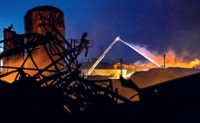Advertisement
Grab your lab coat. Let's get started
Welcome!
Welcome!
Create an account below to get 6 C&EN articles per month, receive newsletters and more - all free.
It seems this is your first time logging in online. Please enter the following information to continue.
As an ACS member you automatically get access to this site. All we need is few more details to create your reading experience.
Not you? Sign in with a different account.
Not you? Sign in with a different account.
ERROR 1
ERROR 1
ERROR 2
ERROR 2
ERROR 2
ERROR 2
ERROR 2
Password and Confirm password must match.
If you have an ACS member number, please enter it here so we can link this account to your membership. (optional)
ERROR 2
ACS values your privacy. By submitting your information, you are gaining access to C&EN and subscribing to our weekly newsletter. We use the information you provide to make your reading experience better, and we will never sell your data to third party members.
Environment
CSB Issues Methyl Isocyanate Plan
by Jeffrey W. Johnson
September 13, 2010
| A version of this story appeared in
Volume 88, Issue 37
The Chemical Safety & Hazard Investigation Board (CSB) released its requirements for a study of the feasibility of reducing or eliminating the stockpile of methyl isocyanate (MIC) at the Bayer CropScience pesticide manufacturing plant in Institute, W.Va. Last year, Congress appropriated $575,000 for CSB to contract with the National Academy of Sciences for NAS to form a panel to investigate MIC use at the plant. The NAS panel would include process safety and engineering experts as well as community and labor organizations, and the investigation would be completed within one year. Two years ago, a Bayer plant explosion killed two workers and threatened an aboveground tank that held 13,000 lb of MIC and was located 80 feet from the accident’s site. A release of MIC from a pesticide plant in Bhopal, India, in 1984 resulted in the deaths and injuries of tens of thousands of people who lived nearby. Bayer’s use and storage of large quantities of MIC at this plant have riled the community because of the plant’s location near homes and a university, which abuts Bayer’s fence line. Community pressure prompted Congress to mandate the NAS study, which could serve as an industry model for the reduction of toxic chemicals, CSB notes.





Join the conversation
Contact the reporter
Submit a Letter to the Editor for publication
Engage with us on Twitter